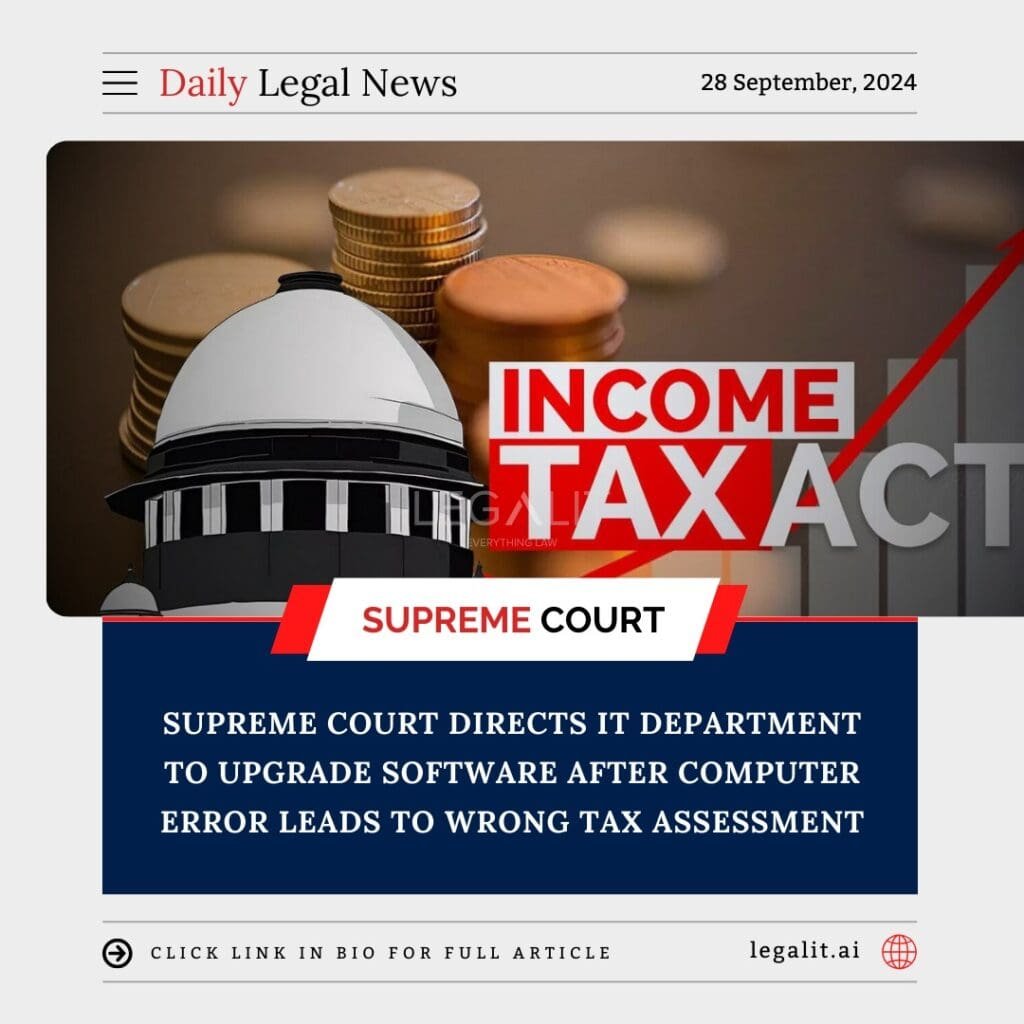
In a significant ruling, the Supreme Court has asked the Income Tax Department to upgrade its software after a computer error resulted in an incorrect tax assessment. The Court’s decision comes in response to a case where a taxpayer was subjected to an erroneous assessment, allegedly due to a glitch in the department’s outdated software. This ruling not only addresses the immediate concerns of the taxpayer but also highlights the importance of modernizing tax administration in India to avoid similar errors in the future.
1. The Case and the Error
The issue arose when the taxpayer’s assessment for a particular financial year reflected incorrect figures, leading to a higher tax demand. Upon review, it was found that a software glitch within the IT Department’s system had caused the miscalculation. The error went undetected during the assessment process, leaving the taxpayer burdened with an inflated tax liability.
After the error was brought to the notice of the courts, the Supreme Court noted that such mistakes could have serious implications for taxpayers and directed the Income Tax Department to address the issue.
2. Court’s Emphasis on Modernization
The Supreme Court emphasized the need for upgrading the existing software to ensure that such errors do not recur. The Court highlighted that with the increasing reliance on technology for tax filings, assessments, and compliance, it is imperative that the systems in use are robust, efficient, and error-free.
- Technological Upgradation: The Court pointed out that as the country moves towards digital governance, especially in tax administration, the technology used must be reliable and updated regularly. The Court’s directive sends a clear message that outdated or faulty systems cannot be excused when it comes to taxpayer rights.
- Human Oversight: Additionally, the Supreme Court urged the tax authorities to exercise more human oversight in cases where the assessment seems unusually high or flawed due to potential software malfunctions.
3. Impact on Taxpayers
The ruling is a significant step toward ensuring that taxpayers are not penalized for faults in the system. Tax assessments, which can have substantial financial and legal consequences, must be accurate and based on reliable data. The Supreme Court’s directive protects taxpayers from undue hardships caused by administrative errors.
- Relief for Affected Taxpayers: The immediate relief for the taxpayer involved in the case has been the recalibration of the assessment. This ruling sets a precedent for similar cases, where the onus will be on the IT Department to correct mistakes arising from technological flaws.
- Trust in the System: For millions of taxpayers who rely on the IT Department’s digital platforms, the Supreme Court’s ruling reinforces the need for a trustworthy and well-functioning tax system.
4. Government’s Response
Following the Supreme Court’s directive, the IT Department is expected to take swift action to upgrade its software. This may include:
- Reviewing Existing Systems: Conducting an internal review to identify vulnerabilities in the current software and ensure that all potential glitches are addressed.
- Implementing New Software Solutions: Collaborating with tech companies to develop more advanced and reliable systems for tax assessment and compliance.
- Training Staff: Ensuring that the department’s personnel are trained to handle advanced systems and can identify errors before they affect taxpayers.
5. Looking Forward: A Digital Future for Tax Administration
As India continues to move towards a digital economy, the government’s reliance on technology for tax administration is expected to grow. This ruling may serve as a catalyst for more systemic improvements in the IT Department’s digital infrastructure. The transition to updated, AI-based, or cloud-backed systems could help reduce the likelihood of errors and streamline the tax filing and assessment processes.
The Supreme Court’s intervention highlights the need for periodic updates and proactive measures to ensure that technology in tax administration is not just about convenience but also about accuracy and fairness.
6. Conclusion
The Supreme Court’s directive to the IT Department to upgrade its software comes as a crucial reminder of the responsibilities that come with digital governance. While technology offers immense benefits in terms of efficiency, errors like those in this case underscore the importance of investing in reliable systems. With taxpayers’ livelihoods at stake, the IT Department must act swiftly to modernize its infrastructure and restore public confidence in the country’s tax administration system.